I kind of have a love-hate relationship with centers.
I love them because they give kids a chance for independent practice (which they so need!) and an opportunity to work with their peers. They also give me a chance to see small groups or guided reading groups.
On the other hand, I dislike them because our little ones get off task very easily, and sometimes kids just don’t do what they are supposed to do, no matter how well we teach them.
Another challenge with centers is that they can take a long time to set up. You want some sort of consistency and structure. Constantly teaching kids how to use new centers is not a good use of time, and t’s confusing for little people! But you also want to keep things fresh, so that students don’t get bored.
And another thing – it’s super easy to run out of ideas for centers! I always feel like I have lots of centers ideas in the back of my mind, but when it comes time to set up or switch out my centers, I’m at a loss.
So in today’s post, I’m basically going to do a “brain dump” of literacy centers and independent work activities we can all use in our Kindergarten, first grade, or second grade classrooms. Because as challenging as centers can be, kids love them and can really learn a lot from them.

Photo Credit, Mars Evis, Shutterstock
Disclaimer: Amazon affiliate links are included in this post.
How I Run Centers
Before I get into what centers I use, I want to share a little bit about how I run centers. (If you’d rather watch a video of how I do this, click HERE.)
The truth is that I have done centers many different ways, and you have to choose a method that works best for you. Here are two main ways I’ve organized centers, as well as my thoughts on these methods:
Method 1:
- Four different centers (in constant physical locations in the classroom) + my guided reading table
- Centers were: word sort, sight words, independent reading, content-area or play-based literacy
- Students go to 3 centers a day (1 can be a guided reading group with me)
- Kids work in heterogeneous (mixed ability) groups
- I call them to the guided reading table by guided reading group name and they leave their center, wherever they may be
- I showed students where they should be by putting their photos in a large pocket chart
I liked this setup because the centers were constant. I had a relatively big classroom and the physical separation of groups worked well. Kids got to work together with students who were at different ability levels, so the more advanced kids were able to support the “lower” students.
In this setup, I could do a little bit of differentiating. I used colored folders to have kids work on different word sorts, or practice different sight words. I basically had to choose between differentiating the work or having kids work together. It was hard to do both because I was using mixed-ability groups. Kids could either work independently on differentiated tasks or work together on the same task. I tried to provide opportunities for both types of work.
One thing I didn’t like about this setup was that the kids often got off-task in the independent reading corner. There was (understandably) noise from kids talking around the classroom, so I think they had trouble focusing.
In the word sort center, some kids wouldn’t finish their work, which was hard to keep track of. I had them keep their sorts in folders. But if they had to finish the previous day’s sort, then they would get behind again. Kids always work at different paces, so there wasn’t really a way around this.
Another issue was lack of choice – sometimes I wish I could have given my kids choices about what centers to go to. Some kids frequently got off task, and I think giving choices might have helped a bit.
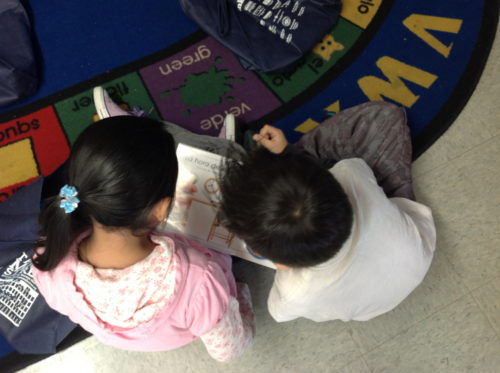
Method 2:
- Kids worked on a word sort (differentiated), then chose a center afterward
- I saw word study and guided reading groups while they worked
- Kids could choose between partner reading, independent reading, word work / sight word work, or playing literacy games on the iPad (working with a partner in each case)
- Kids chose their own partners, which tended to be mixed-ability
What I liked about this method was that kids could work at their own pace on the word sort before starting centers. They were motivated to finish their word sorts, but it didn’t matter if everyone finished at the same time. The centers were also all open-ended, so I wasn’t worried about kids not finishing their work there.
Kids also had many choices – they could choose what they were doing, as well as who they did it with.
Choice was also a disadvantage to this method. Kids sometimes didn’t pick the best partners to work with. Or they only wanted to do one activity. I had to keep an eye on the partnerships to make sure they were productive, and I also had to make sure kids weren’t doing the same center every day. Sometimes I “closed” a center or two so that kids had to pick something different. And I think I eventually ended up requiring that kids complete a weekly checklist to ensure that they were visiting multiple centers.
Want to watch a free webinar with my best tips and more details about running centers? Sign up for free HERE!
Accountability…Or Not
Accountability is another challenge when it comes to centers. I do think it’s important for students to know that they are responsible for staying on task and learning during centers time.
The “easiest” way to ensure that kids are held accountable is to give them a packet of worksheets, have them work quietly and independently, and then check them later.
However, I don’t think that this is the best option for centers work. Primary students (especially in K-1) need to manipulate materials. They need opportunities to talk to each other and learn together. They need to practice literacy skills in authentic, engaging contexts. And worksheets (while appropriate at certain times), do not accomplish any of this.
Sometimes it feels like we have to choose between meaningful work and work for which we can hold students accountable. And while that can occasionally be the case, I try to ask myself two questions when thinking about independent work activities:
- Can I hold students accountable in a new and creative way?
- Should I show students that I trust them to complete the work, even if there’s not a tangible product I can later check?
Devices like iPads and tablets open up some great possibilities for centers accountability. Kids can take photos of their work and send it to you. Or they can record themselves reading independently or with a partner.
Also, as I hinted at above, I don’t always require that students turn something in or “prove” that they did the work. It’s certainly not a free-for-all in my classroom, but I do want to show my kids that I trust them to do the work.
When I don’t have a clear way to check that students do the work, I still provide supervision. I pop over as they’re working and/or have an aide or parent volunteer check in. I also ask the students how the work went (you will always have some super honest kids in your class!).
I spent multiple years teaching Pre-K and Kindergarten, and some “work” at this stage is play. I like giving kids an opportunity to play “restaurant” or “post office,” and I can integrate literacy learning into those centers. There’s really no way to create accountability for this kind of center, and that’s perfectly fine with me.
Meaningful Centers Ideas
Okay! Finally moving on to the main point of this post. 🙂
It’s important to me that most of my centers are grounded in real reading and writing activities. I’m not “into” a whole bunch of isolated practice. There are a TON of really cute word work or sight word activities out there. But I try to include just one of those centers into the rotation. I ultimately want my kids to be good readers and writers, so the independent work I choose has to reflect that.
Many of these ideas are appropriate for Kindergarten/1st, but there are definitely still options that can be used in 2nd and up. The majority of the ideas are low-cost and relatively simple to set up!
Here we go!
Reading:
- Read independently (print books or ebooks)
- Read and “sing” song lyrics of familiar songs
- Read with a partner (choral read, echo read, take turns)
- Act out a book with a partner or small group
- Read a familiar big book or poem in pocket chart with a pointer
- Use puppets, felt pieces, or other manipulatives to retell a familiar story
- Read, record it, listen, and read again to improve fluency or accuracy (send it to teacher and/or parents when finishing)
- Create a taped reading for classmates to listen to
Listening to reading:
- Listen to a partner read
- Listen to books on cassette or CD
- Listen to books on the iPad or computer (check out THIS POST for free options)
- Listen to a taped reading of a text by a classmate
Responding to Texts in Writing/Drawing:
- Draw/write about the most important part of a book or article
- Draw to add illustrations or text features to a short article
- Write a letter to the author of a book
- Write a letter to a character in the book
- Write a letter to a friend recommending a book and explaining why
- Integrate information from several books (“research”) to create a new informational text
- Add pages to a book (this is especially easy when kids are reading patterned books: I like pizza. I like fruit. etc.)
- Write a book recommendation and post it in the classroom library with the book
- Respond to a text by writing a classroom blog post or commenting on a blog post (try Kidblog – even the little ones can use it!)
Writing/Drawing:
Note: Students get lots of additional writing practice during writing workshop each day in my classroom.
- Create a travel brochure for your town / a place you have visited
- Write observations about a class pet or plant
- Write pen pal letters to another class
- Write a holiday or birthday wish list
- Make get well/birthday/thank you cards or letters to classmates, teachers, and staff
- Write a “how to” book to teach a friend how to do something
- Write in a daily or weekly journal
- Create a digital story with a partner using Google Docs or the Scribble Press App
- Work on a class book (create a blank book and students work on the story, one page at a time, and everyone contributes eventually!)
Word Study:
- Alphabet puzzles (for alphabetical order and letter recognition)
- Upper and lower-case letter matching puzzles
- Picture sorts (initial sound, final sound, medial vowel sound, word family, digraph, blend, etc.) – and then saying aloud the words with or to a partner
- Word sorts (Words Their Way has lots)
- Speed sort (sort words, read them aloud, and time it – try to beat your own time)
- Making letters or words with playdough, Wikki Stix, magnetic letters, stamps, etc. (and then reading them aloud to a partner – this part is crucial because many kids will just make words and not know what they say!)
- Matching photos of classmates to the first letter in their names – and then checking with a partner
- Computer or iPad games like Starfall (and so many others!)
- Search for a letter, word pattern, or word family in a familiar big book, poem, or other text (and write words down on a recording sheet)
- Search for a spelling pattern in books, newspapers, magazines (and create a list)
- Making words and reading them to a partner (using word parts/root words/suffixes/affixes to create new words, then record them on a sheet)
Sight Word Work:
- Making words with playdough, Wikki Stix, magnetic letters, stamps, etc. (and then reading them aloud to a partner – this part is crucial because many kids will just make words and not know what they say!)
- Play Sight Word Go Fish
- Play “Sight Word Bang“
- Read sight words on cards with a partner, then search for those words in familiar texts (books read by the class or in guided reading)
- Play “Sight Word Hide and Seek” (read sight words on index card with a partner; one person hides the cards around the classroom and the other person finds each card and reads the word)
Play-Based Literacy:
Note: I actually sit in this type of center with students at first and play with them to ensure they know how to use the literacy props.
- Restaurant theme (props: play food, kitchen, pads for writing down orders, materials for kids to write their own menus, adding machine tape for creating receipts, picture books about restaurants or food preparation)
- Post office theme (props: paper, pencil, envelopes, stickers to serve as stamps, book or list of children’s names in the class, little mailboxes, mentor texts/books that include letters)
- Vet clinic theme (props: sstuffed animals, play stethoscope/otoscope/other, play medicine bottles, paper and pencil, picture books about pets or veterinarians)
- Grocery store theme (props: play food, shopping cart or basket, paper and pencil for making a grocery list, little chalkboards or whiteboards for students to label food and write prices, adding machine tape for creating receipts, picture books about the grocery store or food)
I hope you got at least one new idea from this list! If you’d like additional ideas for running literacy centers in K-2, don’t forget to sign up to watch my free webinar:
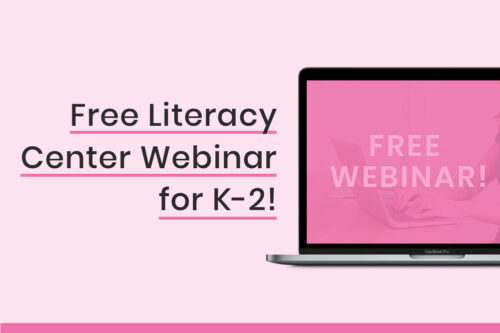
I also have some pre-made centers for Kindergarten and first grade in my TpT store, and you can check them out HERE.
Happy teaching!

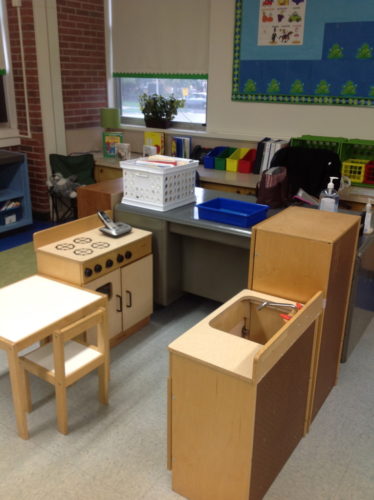
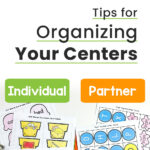
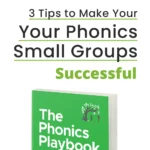
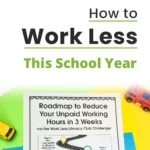
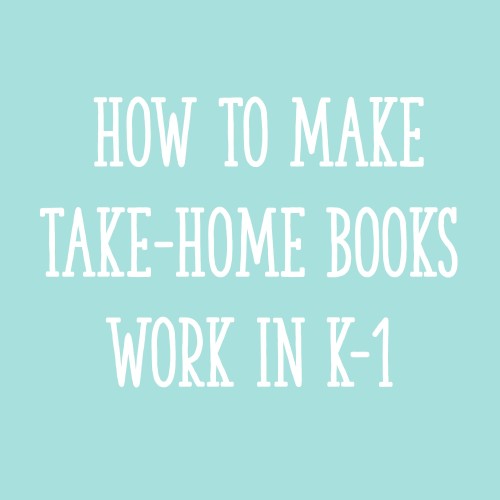
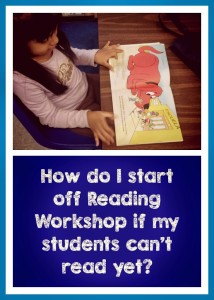
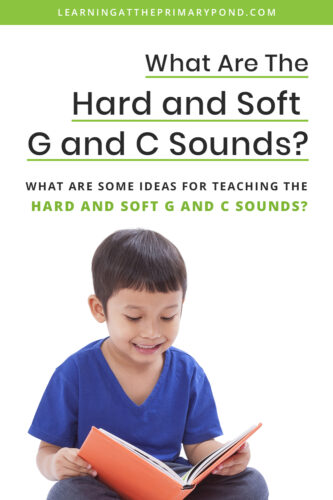






????????????I love these ideas!
These are wonderful ideas that I will be trying out in my Special Ed resource room. Thank you!!
You’ve included a lot of great ideas! Thank you for compiling them in one spot!
Oh, Alison! You are a jewel. As I read your blog I’m shouting, “AMEN, Sista!” Centers sometimes drives me bonkers. The kids can’t help it…they are excited to learn how they do best. I love to see them learn while playing but it definitely has to be structured. I feel so burned out after prepping for centers too. However, you’ve once again saved some of my sanity by sharing your best ideas. You can dump your brain on me any time! ???? LOL! THANK YOU, THANK YOU, THANK YOU!
Haha YES to centers driving us bonkers! This comment made me smile!! I’m so glad my brain dump was helpful!! 🙂
Alison
An idea for knowing when students are at a particular station and who they are working with: Make a chart for the week and have students “sign in” on the chart under the day they visit. Have a “sign-in” at each station area. Make it on 8×11 sheets and keep them in a station binder.
Yes!! Love it! Thank you so much for sharing!!
Alison
I love, love, love these ideas and want to be able to find them again. Can I pin this blog somehow?
Oh yeah, of course!! 🙂 If you hover your mouse over one of the images from the post, you should see a “Pin It” button.
Alison
Thank youu!!! Great article this one! Loved it (:
Thank you for this reality about student learning centers. Your information and ideas are the most helpful that I’ve received after reading a pile of books and talking to countless other teachers. Also a big thank you for the info on making a “sign-in” chart.
Hi Judy, I’m so glad this is helpful!! 🙂
Alison
I’m a first year teacher and this gave me soo many ideas of what I can do for my students! Thank youQ
I’m so glad!! You’re welcome!!